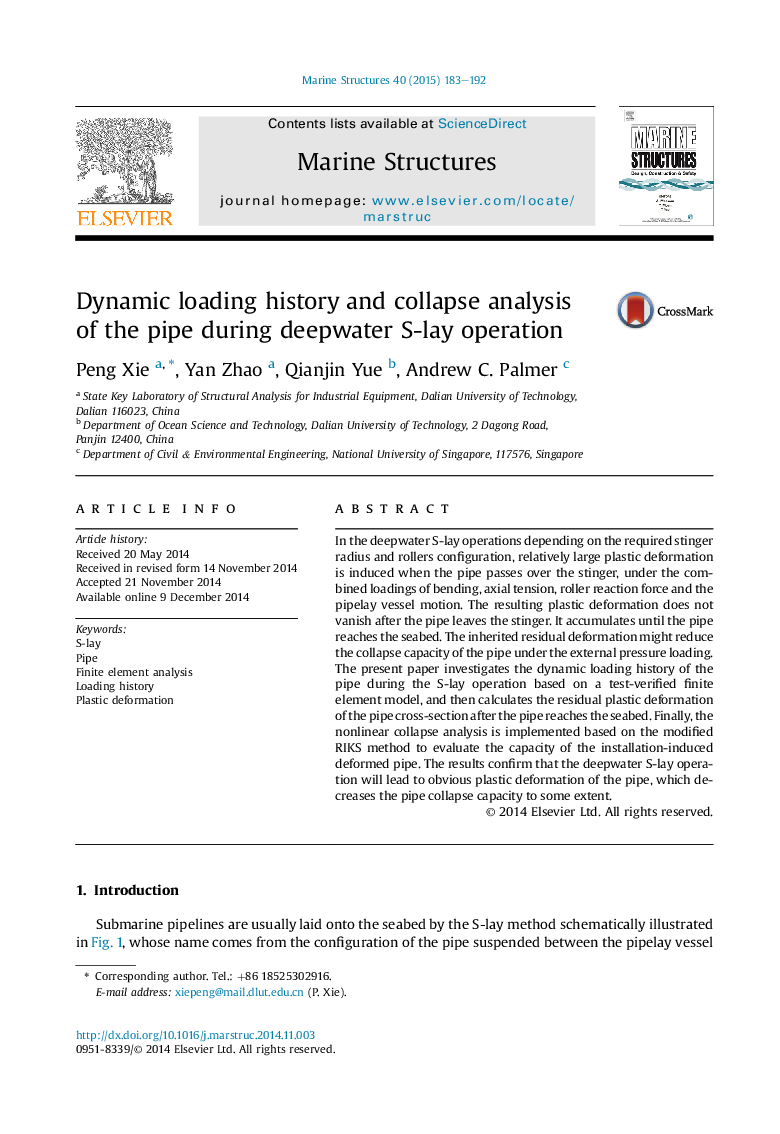| Article ID | Journal | Published Year | Pages | File Type |
|---|---|---|---|---|
| 294407 | Marine Structures | 2015 | 10 Pages |
•We build a 3D finite element model to simulate the process of the pipe sliding from the pipelay vessel to the seabed.•We obtained the plastic deformation and final ovality of the pipe after it was installed to the seabed.•We evaluated the collapse capacity of the installation-induced deformed pipe.
In the deepwater S-lay operations depending on the required stinger radius and rollers configuration, relatively large plastic deformation is induced when the pipe passes over the stinger, under the combined loadings of bending, axial tension, roller reaction force and the pipelay vessel motion. The resulting plastic deformation does not vanish after the pipe leaves the stinger. It accumulates until the pipe reaches the seabed. The inherited residual deformation might reduce the collapse capacity of the pipe under the external pressure loading. The present paper investigates the dynamic loading history of the pipe during the S-lay operation based on a test-verified finite element model, and then calculates the residual plastic deformation of the pipe cross-section after the pipe reaches the seabed. Finally, the nonlinear collapse analysis is implemented based on the modified RIKS method to evaluate the capacity of the installation-induced deformed pipe. The results confirm that the deepwater S-lay operation will lead to obvious plastic deformation of the pipe, which decreases the pipe collapse capacity to some extent.
